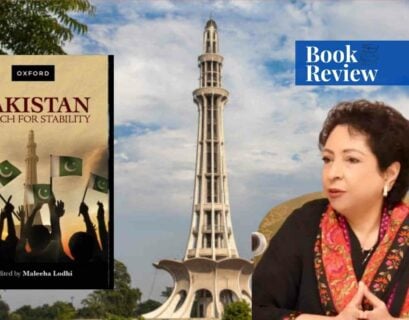Mr Muhammad Hamza Tanvir is an independent journalist and a political analyst, focusing primarily on regional and global strategic and political issues. He has authored numerous articles for different national and international publications.
Sino-Indian Border Disputes
The Line of Actual Control (LAC) is the border shared between India and China. Both countries have different claims about the length of the LAC due to the irredentist claims over the areas of this region. They have fought a full-scale war over these disputed areas in 1962, with India suffering from a mortifying defeat. Since then, they only had limited-scale clashes over this disputed region.
Two factors abated the chances of war between them since then: the Mutual Assured Destruction (MAD) and the Chinese policy of peaceful rise. The nuclearization of China, India, and Pakistan has made the South Asian Region the most disputed and highly dangerous region in the world. None of these countries is a signatory to the Non-Proliferation Treaty (NPT).
The Chinese policy of a peaceful rise resulted in peace at LAC for some time. Both India and China seek to be hegemons; the former in the region, while the latter on the global scale. This has spawned a new epoch of rivalry between them. China is economically and technologically stronger, and India, following its designs of regional hegemony, is now the major player of the Sino-US Cold War in the region.
India enjoys the support of the United States against China. This has made India bold in its hard stance towards China. The reports of the clashes between India and China had emerged recently over the disputed region of Ladakh when the Chinese army intervened in this region claiming it to be a part of their state. This skirmish rose many suspicions around the world about a full-scale war between them.
However, Indian policymakers were smart enough to realize that their military capabilities and the army would not be able to defeat China in case of a full-fledged war and they strived to ease the tensions and resolve the matter on the table. The negotiations between the two are still in the middle of nowhere.
A Glance at Indo-China Past
The conflict between the two countries dates back to the colonization of the sub-continent. Henry McMahon, a British Officer, had drawn the border between India and China in 1914 but China has never recognized this border also known as McMahon Line. Although it is the longest disputed border in the world, not a single bullet was fired from either side in almost the past 50 years until 15th June 2020.
Around 90000 square kilometers (34,750 sq miles) of the territory, almost all of the Indian occupied Arunachal Pradesh state, is claimed by China to be its part and shown as the Southern Tibet on its map. India, on the other hand, claims 38000 square kilometers (15000sq miles) of the land, Aksai Chin, which is currently controlled by China. This disputed region can be grouped into the Eastern, Central, and Western territories.
The China-India border is known for its harsh terrain, intricate winding roads, and high temperatures as it lies at an altitude of 6500 meters (21000 ft) above sea level. The high altitude of the border makes it impossible to access some of the border posts without special breathing equipment. The relations between the two had remained bitter when it comes to the LAC.
They fought a full-scale war over this disputed region in 1962. The war continued for almost 4 weeks and resulted in the chagrin of the Indian military as they had to face a humiliating defeat. China retained Aksai Chin, a crucial strategic corridor that links Western China with Tibet. This war ended with an agreement and the formation of LAC, the de facto boundary between India and China.
An agreement was signed as a result of this war in 1966 between the two parties that prohibited the use of guns and explosives along the stretch of the disputed border to deter any sort of escalation. There had been five more agreements signed between the two sides to resolve border disputes, but India and China have seen several confrontations on LAC. These agreements are:
- 1993: Agreement on the Maintenance of Peace and Tranquility along the LAC in the Sino-India Border Areas.
- 1996: Agreement on Confidence-Building Measures in the Military Field along the LAC in the Indo-China border regions.
- 2005: Protocol on the Modalities for the Implementation of Confidence Building Measures in the Military Field along the LAC in the bordering areas.
- 2012: Establishment of a Working Mechanism for Consultation and Coordination on LAC Border Affairs.
- 2013: Border Defense Cooperation Agreement between China and India.
Only after five years of the 1962 war, the two countries once again came face to face in 1967 at Nathu La (also known as Naku La) pass, India’s highest mountain pass sandwiched between Bhutan, Nepal, and Tibet, after the Indian army intervened in the Sikkim region. Both sides lost several lives as a result of this series of clashes.
Tulung La ambush (1975) was the last time that the shots were officially reported to have been fired across the disputed border. China ambushed and killed four Indian soldiers in the border area of Arunachal Pradesh. The Indian government blamed Chinese forces for crossing the dividing line but China rebuked this claim.
After this conflict, none of the sides fired any bullet in this region for at least fifty years. In April 2013, India claimed that Chinese troops established a camp 10 km, the figure was later revised to 19km, on their side of the LAC in the Daulat Beg Oldi sector. Troops from both sides set up camps and were positioned against each other, but the tensions were defused as both sides agreed to pull back their soldier in early May 2013.
The two countries faced a standoff once again in 2014 when India began constructing a canal in the border village of Demchok. China posted troops and protested which led to a standoff. This faceoff ended after almost three weeks when both sides agreed to withdraw their troops. The troops from both countries were embroiled again in a faceoff in the following year in the northern Ladakh region when Indian troops destructed a watchtower built by China.
In 2017, India and China had a months-long standoff in the Doklam region of Bhutan after the Indian military sent troops to abstain China from constructing a road in this area. This plateau holds strategic significance as it provides access to China to the “Chicken’s neck” (a thin strip of land connecting the northeastern states of India with the rest of the country.
Bhutan and China both claim this area. This issue was resolved through peaceful negotiations. An incident occurred in August of the very year at Pangong Lake. Several soldiers from both sides sustained injuries, and ss per Indian media reports, 72 Indian soldiers were maimed in this confrontation. Both countries faced a standoff in the Galwan Valley and Sikkim region in May 2020.
Several soldiers from both sides were injured as a result of stone-pelting and fistfights. The Chinese soldiers entered the Galwan Valley to halt the construction of a road by the Indian military. China camped at three places: Patrolling Point 14, Patrolling Point 15, and Hot Springs. Around 800 to 1000 Chinese troops pitched camps and heavy vehicles and monitoring equipment was deployed.
The most recent and well-known clash between India and China surfaced on 15th June 2020. The clash resulted in the injury of the soldiers on both sides. It is reported that 20 Indian soldiers, including an Indian Colonel, were killed and 76 were maimed in this hand-to-hand combat. They were killed in a physical fight that involved batons and stones only.
This skirmish followed weeks of low-level contention after scores of soldiers from both sides were injured in the border area of Sikkim state. As per the Indian officials, Chinese troops encroached across the borderline further in the Ladakh region and India reciprocated the move by sending extra troops to opposite positions.
Current Confrontation between India and China
The tensions between India and China are perennially high since last year. Both the countries are involved in limited border confrontations. Recently, the Indian media has claimed that Indian soldiers have foiled Chinese incursion in Arunachal Pradesh’s Tawang area after some 200 Chinese troops crossed into the Indian-held territory from Tibet. Although Indian media claims that their army had temporarily detained the Chinese troops, none of the reliable international media agencies has reported any such incident.
This depicts that it could be a part of jingoistic and state-driven propaganda of Indian media for which they are well-known and for this reason, there is not much reliable news regarding these claims of the Indian media. China, on the other hand, had refuted such claims previously made by Indian media. At the end of September, the Indian media made claims about the People’s Liberation Army’s incursion into Indian territory, damaging Indian infrastructure but the Chinese officials have debunked all such claims.
The reason behind such claims soon after the QUAD summit could also be to show a confrontational relation between India and China to persuade the Western allies. The AUKUS pact signed between the US, the UK, and Australia has also perturbed India about its significance as an American ally.
So, it would not be fallacious to construe that such claims by the Indian media have been concocted to signal its significant role against China to its Western allies. Such news by the Indian media could be detrimental to the stability of the region and could raise the chance of a disturbing peace in South Asia which would be inimical for the rise of all the South Asian nations including India itself.
Boiling India-China Border Conflict Cauldron and the Possibility of a Full-Scale War
As per the recent report of Strategic Research Institute (SRI), India and China were among the top 10 countries which spent the highest percentage of their GDP on military expenditure in the year 2020: India is the 3rd, while China is the 10th country in this list. Both countries possess nuclear weapons. China became a nuclear power on 16th October 1964.
This resulted in the nuclearization of South Asia and it has now become a hot spot as all three nuclear states of the region are hostile to each other. India has a dream to be the sole superpower of the region, but the sharp and smooth rise of China has obstructed its designs. The rise of China as a new global superpower has also jeopardized the unipolar hegemonic position of the United States.
The US has been using the Indian army and policymakers as mercenaries to contain China by involving it in border disputes. Although the Indian policymakers are smart enough to decipher that their military capabilities and military training are not sufficient to defeat China in a full-scale war. The countries need peace at their border to maintain their rise as superpowers.
The war will impinge the economy of both countries, but the Indian economy will face the hardest blow, for it will be highly dependent on its Western allies to provide it weaponry as it has comparatively less capability to fulfill its military needs. The nuclearization of both states is another factor that describes the possibility of a full-scale war between the two. Since both countries are nuclear weapons states, the phenomenon of Mutually Assured Destruction (MAD) is at work between them.
Hence, keeping all these factors in mind, it would be cogent to construe that the probability of a full-scale war between India and China is the least, but it would also be fallacious to expect that they will enjoy friendly relations in the near future. The limited border conflicts between the two countries will continue, but they would be resolved through negotiations just like the 13th round of negotiations between the two recently.
If you want to submit your articles and/or research papers, please check the Submissions page.
The views and opinions expressed in this article/paper are the author’s own and do not necessarily reflect the editorial position of Paradigm Shift.



















